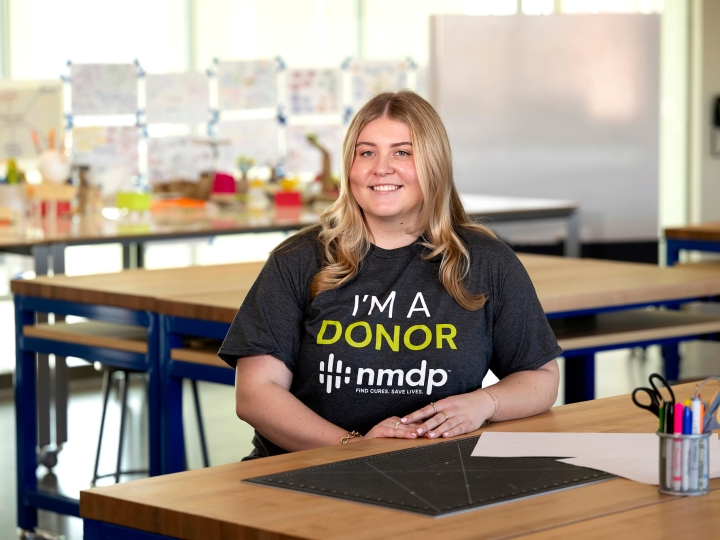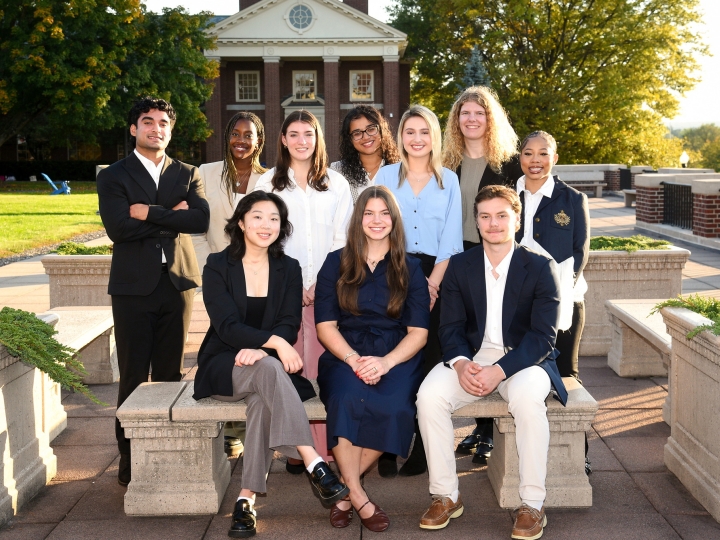Bucknell Students Join Interdisciplinary Effort to Tell Story of Slavery in Antigua
April 26, 2018
Alexander Murph '18 and Patrick Newhart '18 knew nothing about Antigua's historic sugar mills when they agreed to create a website identifying the mills' locations and illuminating the stories of African slaves who worked on the island's plantations.
However, both Murph, a computer science and mathematics major, and Newhart, an economics and computer science major, soon found themselves deeply invested in an interdisciplinary effort to reverse the erasure of an exploited and enslaved population.
"I think that's what entranced me about this project," said Murph, explaining that all Bucknell computer science majors must complete a capstone project drawn from proposals submitted by individuals and organizations from across campus.
The Antigua mapping proposal, developed by the Griot Institute for Africana Studies, challenged students to create a well-designed, interactive map that would shed light on the island's often overlooked legacy of slavery on sugar plantations. The project identifies Antigua's nearly 200 sugar mills and provides geographic and historical information about each locale.
"There is a rich history of colonialism in the context of the African diaspora that I never knew about," Murph said. "The social justice aspect was a central motivation for choosing this proposal, and it added a level of meaning that went beyond the usual computer-science project."
Students Work to Achieve Diverse Aims
Newhart, who served as project owner, said challenges included making sure the map could be easily updated by individuals who lack computer science backgrounds, a goal accomplished by Murph's development of an easy-to-use graphic user interface. In addition, the team, which also included computer science majors Khoi Le '18 and Khai Nguyen '18, had to meet the Griot's design specifications.
"The idea was to make the design authentic to historic maps, but still accessible to modern audiences," Newhart said, adding, "A project like this is what a culminating experience should be about. This what you hear about on your Bucknell tour — the ability to collaborate and cross disciplines. It's exciting."
Find Your Path
The web-based map is part of a larger effort by the Griot Institute and Digital Pedagogy & Scholarship to organize and make accessible historical materials collected by Antigua-based historian Agnes Meeker. Griot Institute graduate assistant Sam Lauer '13, M'18, Presidential Fellow Christine Cha '20 and intern Lina Hinh '19 have worked to edit and arrange Meeker's materials, which include narratives and artifacts such as shipping manifests and letters written by mill owners.
"Parts of history have been ripped out of history books, and so many people's stories have been wiped off the map," said Hinh, who majors in women's & gender studies and sociology. "This project has helped me focus on those voices that need to be heard."
Lauer, who joined the project in 2016, added, "This work has helped me feel devoted to bringing histories out of erasure. I'll take that with me no matter what I do in the future."
Fostering Collaboration, Illuminating History
Professor Carmen Gillespie, English, director of the Griot Institute, said she hopes students involved in the project — including those who travel to Antigua as part of Bucknell in the Caribbean — gain "a sense of Antigua's history and an appreciation for the extent to which the sugar industry and slavery consumed the Caribbean."
Noting that Professor Katie Faull, German studies and comparative humanities, and Diane Jakacki, digital scholarship coordinator and faculty teaching associate in comparative humanities, are also instrumental in the project, Gillespie added, "I also hope the students were able to understand what it takes to engage in a multi-disciplinary project and hone their individual contributions toward a common end that has relevance in giving voice to so many black lives whose stories are lost to history."
Murph and Newhart said they appreciated the opportunity to work on a capstone project with that kind of potential impact.
"You look at the sugar mills that are still standing and think they're interesting," Newhart said. "But most people don't understand how they got there. This project challenges people to think critically about history and the origins of things that they often take for granted."

